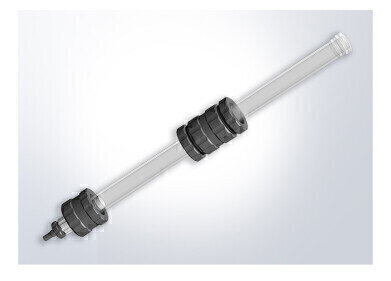Preparative
What Drives Female Athletes? — Chromatography Investigates
Aug 18 2017
The difference in sporting performance between elite men and women is clear to see in the times recorded in running events and the distances thrown in field events. Though both male and female records improve — the differences between the times and distances stays reasonably constant, with a mean difference of around 10 percent across athletics events between the genders.
Genes and hormones
The differences are basically down to how man and women are built — physiologically we are different. Genetics and hormones mean that generally, men can out run and jump women due to innate characteristics. But these differences are reduced when power is not the main factor and in some sports, the greater flexibility of the female body can be an advantage.
The hormone testosterone is thought to be responsible for many of the differences in athletic performance when power is needed. Testosterone is the male sex hormone and is secreted from the testicles of men and the ovaries of women. As well as promoting male sexual characteristics, it is responsible for the increased muscle and bone mass in men, and lower fat levels seen in men when compared to women. Generally, the levels of testosterone in males is around times higher than in females.
Female athletes and androgens
But while it is recognised that testosterone — an androgen or male hormone — is the main cause of increased athletic performance in male athletes, there has been little research to back the claim up. The lack of concrete data has caused problems for athletics when the issue of hyperandrogenism has been levelled as a cause for banning some female athletes from competing.
Doping with androgens in women’s sport is also an issue. Of the almost 300 elite athletes who were serving bans at the end of 2016, 116 were women and 64 of those were for androgen abuse. But some women suffer from hyperandrogenism naturally, and previously athletes who suffer from hyperandrogenism have been banned from competing unless they reduce their hormone levels.
Androgens affect performance — but not in all events
Research published in the British Journal of Sports Medicine has addressed some of the issues of how testosterone affects sporting performance. The researchers compared over 2000 performances from the 2011 and 2013 World Athletic Championships with the androgen measurement in the athlete’s blood. Liquid chromatography was used to measure the androgen levels in serum, a technique discussed in the article, Accelerated Development of Quantitative Assays for Antibody Drug Conjugates.
They found that there was a correlation between testosterone levels and female performance. Hammer throwers, hurdlers and 400m runners had most benefit from high testosterone levels. The researchers suggest caution though, as the research doesn’t provide causation. Higher testosterone levels give a leaner body mass, increased aggression and improved red blood cell production — all factors that could be the driver behind better performance.
Events
May 11 2025 Vienna, Austria
May 18 2025 Tempe. AZ, USA
May 21 2025 Birmingham, UK
Jun 01 2025 Baltimore, MD, USA
Jun 15 2025 Bruges, Belgium














